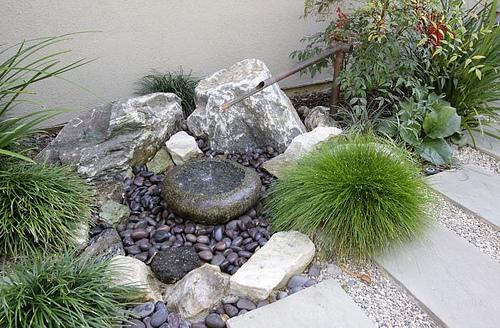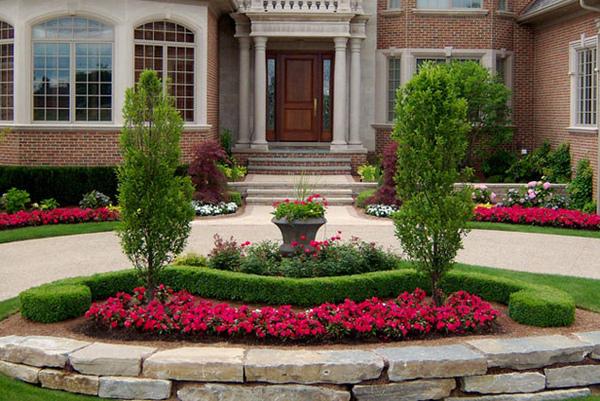Unity in landscape design, is the overarching design principle that is used to create a sense of wholeness or harmony in the landscape.
Using too many individual plants or other objects in the landscape often leads to a cluttered and chaotic effect. On the other hand, too many of the same kind of plant can lead to a boring effect.
What’s the Big Idea? Theme, Story, or Concept
Using a theme or other concept in landscape design can be a good strategy for coming up with ideas to create a pleasing effect in the landscape. Perhaps grasses are a favorite plant. Using different types of grasses throughout the landscape then might be the theme. Ideas and themes are limited only by the imagination. Other thematic ideas include:
- Seasonal interest
- Historic theme
- Color
- Plant type or species
- Sacred space
Once a theme or concept has been identified, create unity in the landscape by using the principles of repetition, continuation, or proximity (how close objects are to each other) to create a pleasing, harmonious landscape design.

I. Repetition:
Repetition of elements throughout the landscape can be used to create unity in the landscape.
- Color
- Texture
- Pattern
- Form
- Line
- Plant type or other elements
II. Proximity: (grouping)
How close plants are to each other influences the sense of harmony in the garden. Individual plants with diverse characteristics can be successfully integrated if they look like they belong together.
- Mass plantings
- Group plants in odd numbers (3, 5, 7)
III. Continuation:
A sequence of spaces or continuous flow of an element can be created to visually move the viewer’s eye through the landscape. Various elements that can be used include:
- Lawn
- Groundcovers
- Paths using similar materials

Combine some or all of these methods to create unity. Once you have determined how you want to unify your landscape, add some variety to give it interest. Too much unity (think checkerboard) can be boring and the opposite is true when too many diverse plants (eg. one of each plant) are used.
Additional Resources:
Southeast
Florida – Landscape Design: Ten Important Things to Consider
Kentucky – Creating Outdoor Rooms
